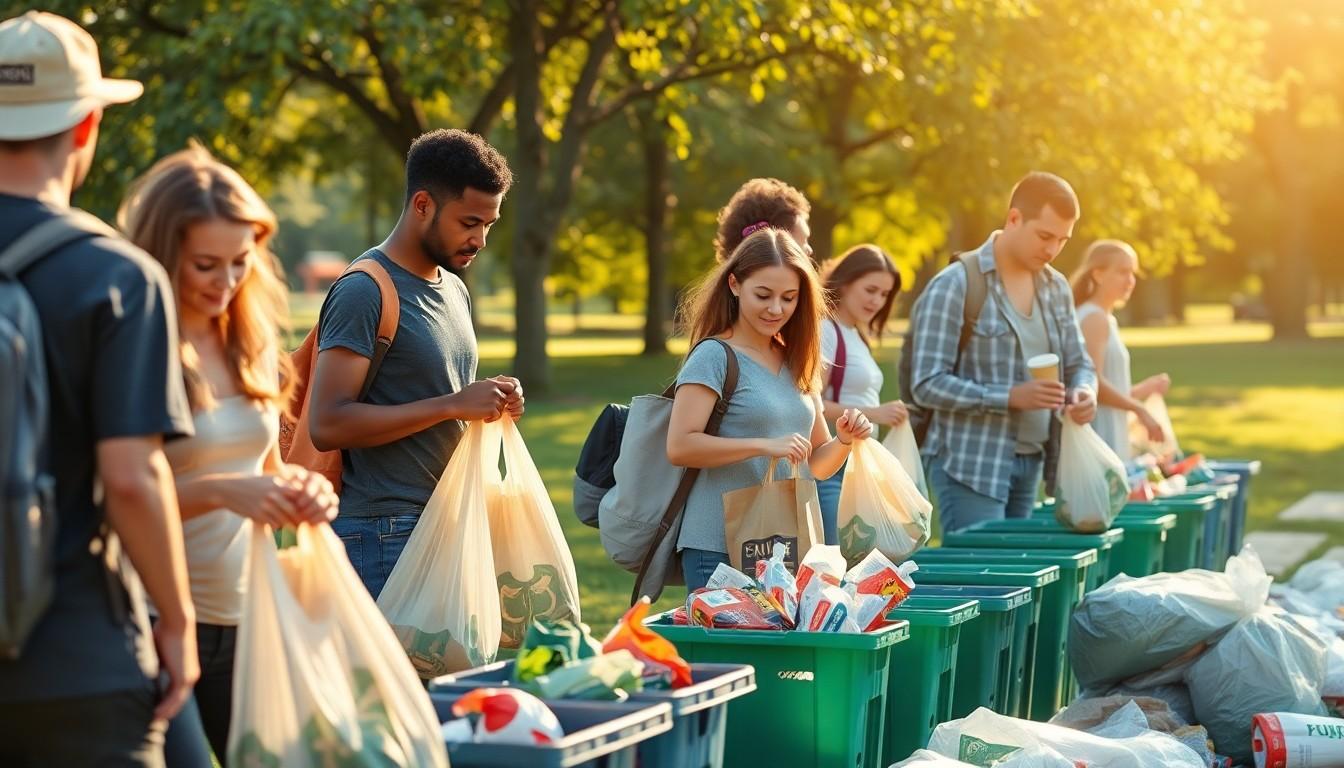In a world where eco-friendly choices often feel like a daunting puzzle, sustainable living doesn’t have to be rocket science—or a snooze fest. It’s about making simple tweaks that not only lighten the planet’s load but also make life a little more fabulous. Who knew saving the Earth could be this fun?
Sustainable Living Tips Nobullswipecom
Sustainable living emphasizes conscious choices that reduce environmental impact. Adopting eco-friendly practices often involves small adjustments in daily routines. Examples include using reusable bags for shopping and opting for public transport instead of personal vehicles.
Integrating energy-efficient appliances contributes to reduced electricity consumption. Many households can also benefit from reducing water usage through simple actions like fixing leaks and using low-flow fixtures. Selecting sustainable products, such as organic foods, supports not only personal health but also local agriculture.
Reducing waste plays a crucial role in sustainable living. Composting food scraps and recycling materials like paper and glass helps minimize landfill contributions. Additionally, buying second-hand items preserves resources and supports a circular economy.
Educating others about sustainability fosters a greater communal effort. Sharing knowledge on eco-friendly practices can inspire others to take similar actions. Participation in local environmental groups provides opportunities for collective impact in communities.
Advocating for sustainable policies at a local level can also lead to significant changes. Engaging with community leaders about environmental issues often encourages the implementation of green initiatives. Ultimately, sustainable living reflects an ongoing commitment to a healthier planet and an enhanced quality of life.
Essential Sustainable Living Tips From NoBullSwipeCom

Sustainable living is practical and important. NoBullSwipeCom offers actionable tips to make a difference.
Reducing Waste in Daily Life
Minimizing waste starts with conscious choices. Using reusable bags and containers limits single-use plastic. Shopping second-hand reduces waste while saving money. Composting food scraps adds nutrient-rich material to gardens. Following the principle of “reduce, reuse, recycle” encourages thoughtful consumption. Participating in local recycling programs enhances community efforts. Each small action leads to significant waste reduction.
Energy Efficiency Practices
Incorporating energy-efficient appliances saves resources and money. Choosing LED bulbs decreases electricity use while providing vibrant light. Setting thermostats lower in winter and higher in summer optimizes energy usage. Unplugging devices when not in use prevents phantom energy consumption. Utilizing natural light and ventilation reduces reliance on artificial sources. Engaging in regular energy audits helps identify further efficiency improvements. Prioritizing sustainable energy solutions contributes to a healthier planet.
Incorporating Sustainable Practices at Home
Sustainable living integrates various practices that enhance environmental quality. These simple yet effective strategies contribute positively to daily life.
Eco-Friendly Home Products
Choosing eco-friendly home products reduces harmful waste and enhances indoor air quality. Look for items labeled as biodegradable or made from recycled materials. Prioritize non-toxic cleaning supplies that contain natural ingredients instead of harsh chemicals. Opt for personal care products packaged in recyclable containers. Seek furniture made from sustainably sourced wood. Consider using reusable items such as silicone bags and beeswax wraps to cut down on single-use plastics. Each small choice helps create a healthier home environment while supporting sustainable brands.
Sustainable Gardening Ideas
Starting a sustainable garden promotes biodiversity and conserves resources. Emphasize native plants that require less water and are adapted to the local climate. Use organic seeds and avoid synthetic pesticides to maintain soil health. Attract pollinators by planting flowers that draw bees and butterflies. Implement a rainwater collection system to irrigate plants without tapping into drinking water reserves. Similarly, practice composting by recycling food scraps. These actions not only create a thriving garden but also enhance environmental sustainability and beauty in outdoor spaces.
Sustainable Transportation Choices
Choosing sustainable transportation options significantly reduces one’s carbon footprint. Opting for public transportation, like buses or trains, lowers emissions compared to individual car use. Biking offers an eco-friendly alternative, promoting physical health while minimizing environmental impact. Walking remains a viable choice for short distances, contributing to reduced air pollution.
Carpooling enhances resource efficiency, allowing multiple passengers to share the same vehicle. Electric vehicles (EVs) present a modern solution, providing a cleaner alternative if charged with renewable energy. Exploring car-sharing services enables occasional vehicle access without the responsibility of ownership, decreasing overall vehicle demand.
Investing in fuel-efficient vehicles also contributes to sustainable transportation. Hybrid cars combine traditional engines with electric propulsion, optimizing fuel consumption. Research shows that companies producing electric or hybrid vehicles often see decreased operational costs over time.
In urban areas, congestion tends to be a significant issue. Encouraging infrastructure development for walking and biking enhances accessibility. Initiatives for expanding pedestrian pathways and bike lanes create safer environments for non-motorized travel.
Supporting local policies that prioritize public transit investments fosters sustainable community growth. Engaging in discussions about transportation options raises awareness and advocates for significant environmental improvements.
These sustainable transportation choices, when integrated into daily routines, lead to cleaner air and healthier communities. Each decision contributes to an overall commitment to environmental sustainability while enhancing personal well-being.
Vital Movement Towards Sustainability
Embracing sustainable living is a journey that enhances both personal well-being and environmental health. By making intentional choices in daily life individuals can create a positive impact without feeling overwhelmed. Simple actions like reducing waste and opting for eco-friendly products pave the way for a more sustainable future.
It’s essential to engage with communities and share knowledge about sustainability. Collective efforts amplify the benefits and foster a culture of environmental responsibility. As individuals adopt these practices they not only improve their own lives but also contribute to a healthier planet for generations to come. Every small step counts in this vital movement towards sustainability.

